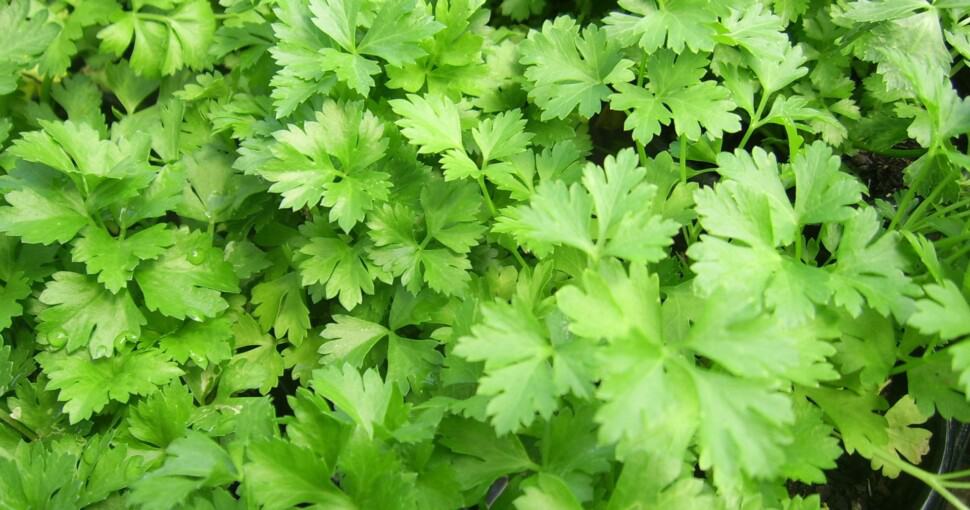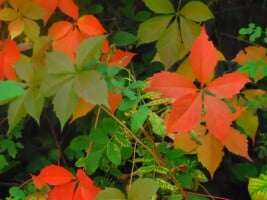Parsley plants (Petroselinum crispum) belong to the Apiaceae family and are native to the Mediterranean region. Parsley has become naturalized in most countries worldwide and is incorporated into the cuisine of many different cultures. Widely used as a garnish, this dark green leafy herb has many benefits in addition to visually perking up a plate.
Contents
Parsley grows as a biennial plant in warmer climates or as an annual plant in colder areas. As a biennial, the parsley plant produces a flower stem in the second year. Parsley flowers are white or yellow, and these flower clusters, or umbels, attract bees and butterflies to the garden.
While there are a large number of parsley varieties available, parsley is divided into three broad categories.
- Curley leaf parsley
- Flat-leaf parsley
- Root parsley
The tender leaves in all three categories have a tripinnate arrangement, even if the curly leaf type is more ornamental. A parsley bush grows a rosette of leaves from a central tap root. The leaves vary in size from four to ten inches high. The flower stem grows much taller to a height of almost thirty inches.
Parsley is grown for medicinal and culinary purposes but is a great addition to the flower garden as a filler plant or a companion plant to keep insects at bay. Traditionally parsley has been used as a diuretic, to clean the liver and kidneys and to aid digestion. Parsley is also an excellent source of vitamins, minerals, and antioxidants.
Parsley is widely eaten and nutritious in small quantities, but it can be toxic as an essential oil or when eaten in large volumes. Before adding it to your plate, ensure that you have harvested true parsley and not one of the many plants that look like it.
1. French Parsley
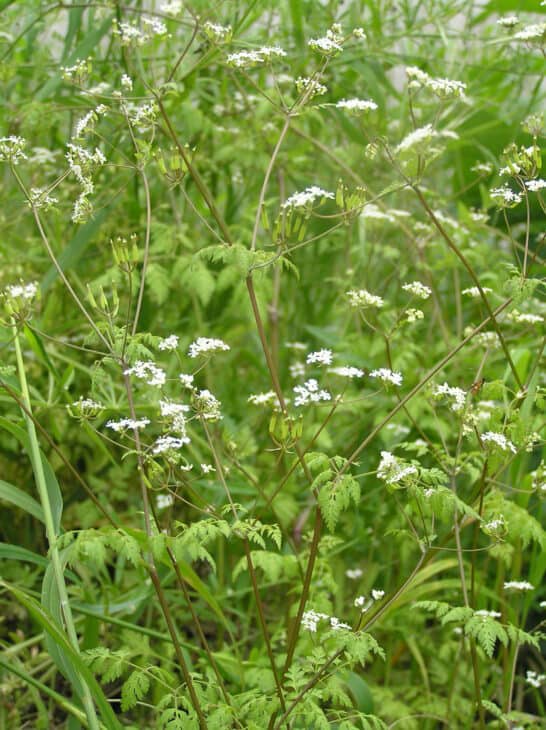
French parsley (Anthriscus cerefolium) is more commonly known as garden chervil and belongs to the same plant family as parsley. Chervil is native to the Caucasus region around the Black sea but has become naturalized throughout Europe and is the herb of choice in many French dishes.
French parsley tastes like parsley with a hint of anise or licorice. This aromatic plant structure is similar to parsley. Leaves are lighter green than parsley but have the same tripinnate leaf structure. Leaves of French parsley are not as flat as Italian parsley but are not as curly as a curly leaf parsley variety.
French parsley plants have the same taproot and rosette plant form as true parsley and grow about two feet tall. Flower stems are taller than the plant leaves and bear white flowers on the umbels that are slightly smaller than parsley. Once chervil starts to flower, the leaves become bitter and are not considered good for eating.
2. Poison Hemlock
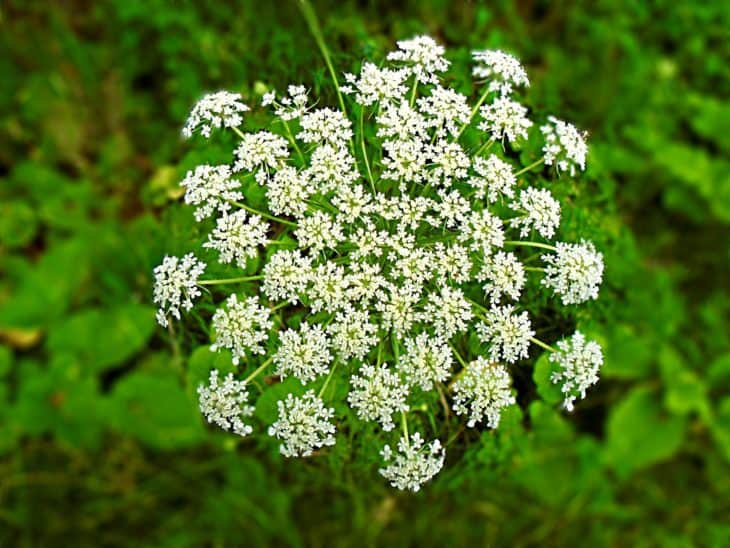
Poison hemlock (Conium maculatum) is a member of the Apiaceae plant family, just like parsley. Hemlock is native to North Africa and Europe but is naturalized in North America, Australia, and Asia. It grows well along streams which help to spread poison hemlock, but it will grow just as well along roadsides and in wooded areas.
The pinnate leaves of poison hemlock are dark green like parsley but are bigger and grow from the plant stem, not directly from the taproot. Hemlock plants grow much larger than parsley, between five and eight feet tall. The hollow stems of poison hemlock often have red or purple coloration.
The white flowers of the hemlock plant also resemble the white flower umbels of parsley but are much larger. Coniine is one of the chemicals in hemlock that causes it to be poisonous and is found in all parts of the plant. Coniine affects the central nervous system, and death is usually a result of respiratory muscle failure when the nervous system fails.
Hemlock could remain toxic for years after the plant has died. Poison hemlock is not only dangerous when eaten but also when inhaled or via skin contact. Poison hemlock was used to poison condemned prisoners in ancient Greece. Socrates was one such prisoner that succumbed to this poisonous plant for his crime of impiety.
Related: 12 Plants That Look Like Poison Hemlock
3. Hedge Parsley
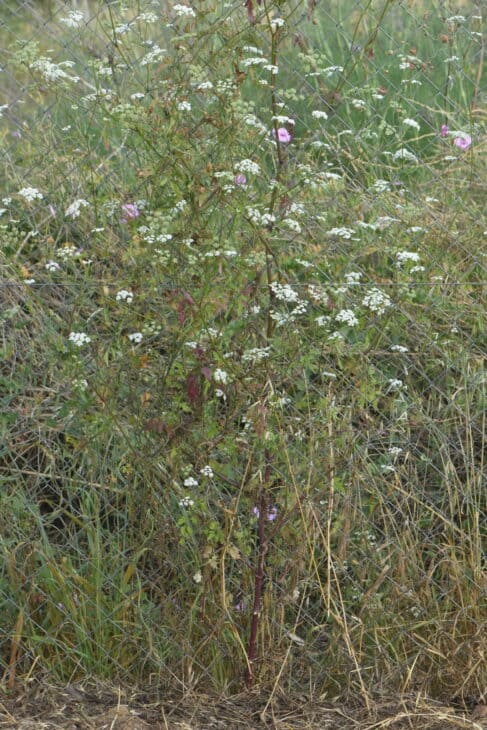
Common hedge parsley (Torilis arvensis) is a plant native to Europe that has spread to North America and is generally considered a weed. Hedge parsley grows as an annual plant and forms part of the Apiaceae plant family with dark green fern-like leaves and a bipinnate leaf composition.
Hedge parsley plants grow to around two and a half feet tall. Like with parsley, the hedge parsley flowers are carried high on the plant, but the flowers are bigger and may be white or slightly pink in color. Unlike true parsley, the leaves and stems of hedge parsley have a covering of short white hairs.
The seeds of the hedge parsley plant have a covering of hooked prickles that causes the seeds to cling to clothes and animal fur. These burs give hedge parsley its other common name, tall sock-destroyer. While these burs are a nuisance for humans, it is a very effective method of seed distribution for the hedge parsley plant.
4. Chinese Parsley
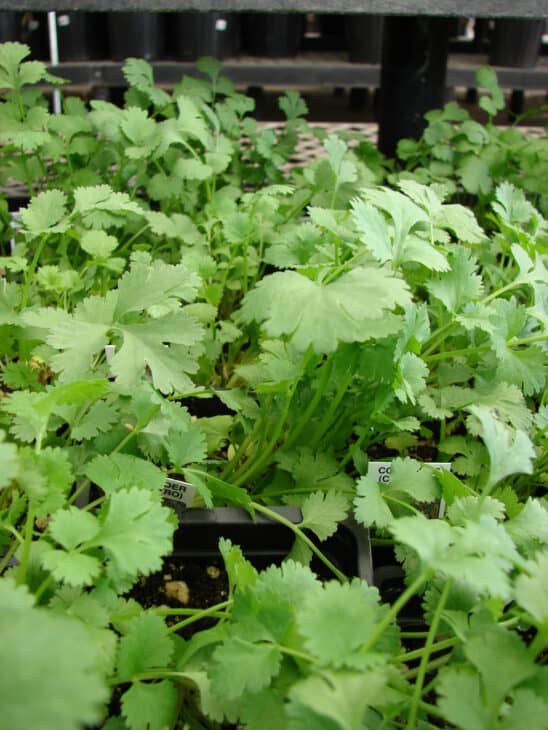
Chinese parsley (Coriandrum sativum) goes by many names, like cilantro, coriander, or dhania. Chinese parsley is native to Northern Africa, Southern Europe, and Asia. This member of the Apiaceae family has dark green leaves that look very similar to flat-leafed parsley and have a bipinnate leaf structure.
Chinese parsley is an annual herb that grows best in the cooler months of spring and fall and grows to heights ranging from eleven to twenty inches. The tender leaves of Chinese parsley are harvested as a herb and referred to as cilantro. Seeds from the Chinese parsley plant are called coriander and are classified as a type of spice.
Accounts of the use of Chines parsley date back to ancient Egypt. Coriander seeds were also found in caves in Israel that are more than eight thousand years old. Chinese parsley has been used by the Chinese since the fifth century and by the Romans and Greeks, both for medicine and as food for centuries.
Oddly, around a quarter of all people who taste Chines parsley dislike it and liken it to a soapy taste or even stink bugs. This is due to a genetic ability to perceive the presence of aldehydes in this herb.
5. Cow Parsley
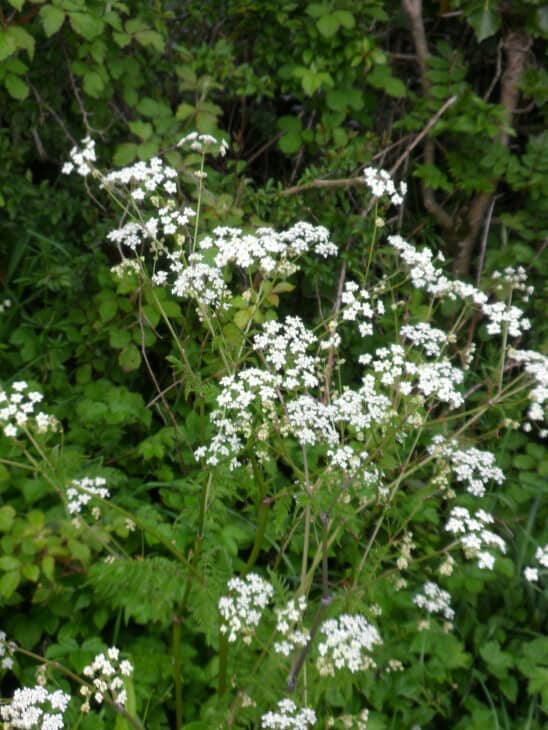
Cow parsley (Anthriscus sylvestris) also goes by names like Queen Anne’s lace and wild chervil. This biennial plant from the Apiaceae plant family is native to Europe, Northwest Africa, and Western Asia. Today cow parsley has naturalized in areas of the United States and England.
Cow parsley grows up to sixty-seven inches tall, and its leaves are fern-like with a pinnate structure similar to flat-leafed parsley. The underside of cow parsley leaves has a fine covering of hairs. Leaves are carried on hollow stems in an alternate arrangement, unlike true parsley, which grows from a central point.
The white cow parsley flowers are small and arranged in umbels on the topmost part of the plant. These flowers attract many pollinators and are an early pollen source for bees and hoverflies. Cow parsley flowers are also a preferred source of nectar for orange-tip butterflies. Cow parsley is an edible herb that tastes like a mixture of weak parsley and licorice.
6. Parsley Piert
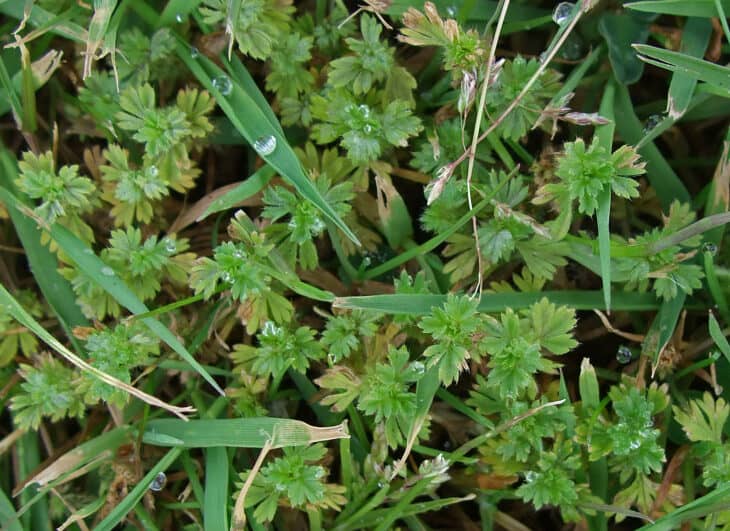
Parsley piert (Aphanes) belongs to the Rosaceae family, and the plant is native to Europe, Australia, and Asia. Parsley piert is viewed as a weed in the United States and the British Isles, where it has spread to.
Parsley piert is a small plant that grows no bigger than eight inches tall and tends to sprawl in clumps in short-mowed lawns. Flowers of the parsley piert plant are green and grow at the base of the pinnate leaf.
While lawn owners regard parsley piert as a weed, this plant has a history of being grown as a medicinal plant to help relieve fever and kidney stones and aid with fluid retention.

